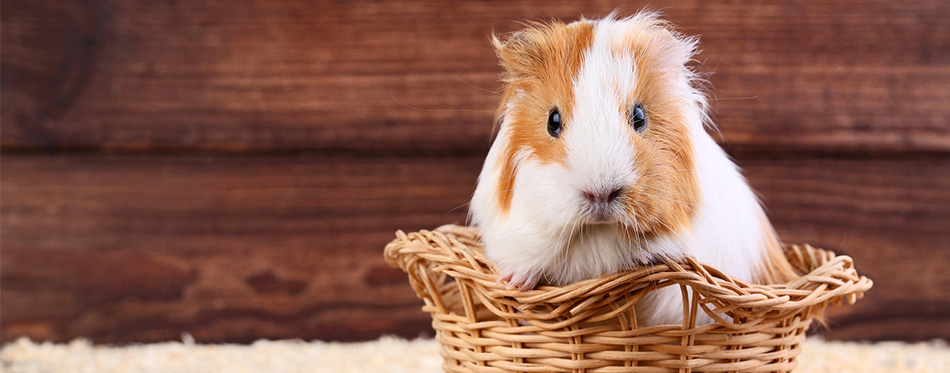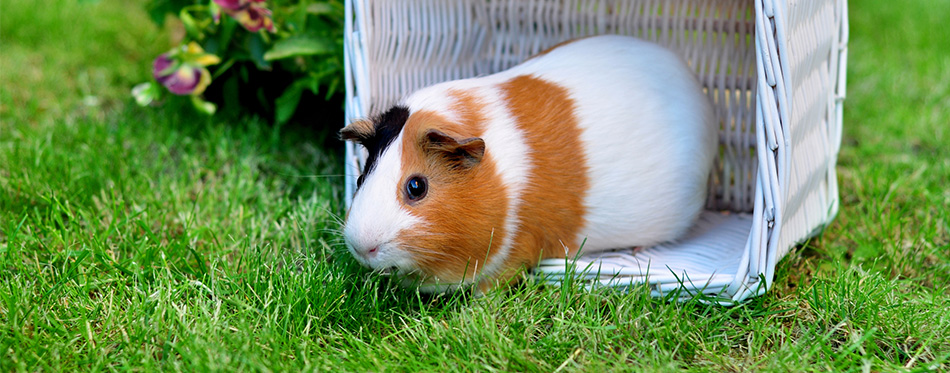One of the oddest yet very valid concerns that guinea pig owners have is whether their pets hibernate or not. This is a condition or a process whereby an animal appears dead when in fact it is still alive. Hibernation often occurs during the winter months or when the environmental temperature reaches a certain point that is lower than the lower limit of the animal’s set body temperature. So, can guinea pigs go into a state of hibernation? Let us find out.

Hibernation and Warm-Blooded Animals
Hibernation is a state wherein an animal shows metabolic depression and inactivity. It is a state that is very common among endothermic organisms or “warm-blooded” animals. Endothermic animals are able to maintain a body temperature that is favorable to its metabolic needs. Animals do this by utilizing the same heat that their body organs generate as they carry out their metabolic functions. They do not rely on external heat sources to keep their bodies warm. They are very different from cold-blooded animals that require external heat sources to regulate their body temperatures.
Since endothermic animals rely on their own ability to produce heat, this is where food comes into play. All food contains calories. A calorie is nothing more than a unit of measure of energy. Dictionaries define calorie as that unit of energy that will increase the temperature of a gram of water by 1 degree Celsius. In other words, calorie is the heat that will elevate water temperature by at least 1 degree Celsius or about 33.8 degrees Fahrenheit.
In the wild, warm-blooded animals do not have a steady supply of food. They have to compete with each other for meager food resources. Certain times of the year can also make food very scarce. For example, during winter, there is not much food available. And if there is food, animals have great competition. This also makes food very limited.
If an endothermic animal will not be able to get its food, then it will not be able to generate heat. Its body requires food so that it can convert it into chemical energy. This energy is what its tissues and cells use to maintain optimum metabolic functioning. Without food, the cells will have no energy left to perform metabolic functions.
This is where hibernation comes in. Hibernation has a protective function. It is an animal’s way of conserving body heat when there is not enough food resources. What happens is that the animal slows down its metabolic processes in an effort to use as little energy as possible without sacrificing its life. In other words, it tries to maintain the full functioning of its vital organs only. That means, it may look dead, but its brain, heart, lungs, and other very important organs are still functioning; although at very low levels.
Hibernating animals will experience a drop in their body temperatures. For example, Arctic ground squirrels are known to have a temperature of 28.4 degrees Fahrenheit or minus-2 degrees Celsius when they hibernate. They can maintain this temperature for at least 3 weeks at any given time. However, the temperatures in their head and neck stay at a more comfortable temperature of 32 degrees Fahrenheit or greater.
By comparison, bears can only have very modest drops in their body temperatures compared to ground squirrels. True hibernators can reduce their body temperature by at least 89.6 degrees Fahrenheit. Bears only experience a drop in temperature between 37.4 and 41 degrees Fahrenheit. What makes bears look like true hibernators is that they are capable of recycling their proteins and urine. This allows bears to avoid muscle atrophy and stop urinating for many months.
In addition to drops in body temperature, the animal also slows down its breathing and heart rate. This is understandable since breathing involves contraction of the muscles of respiration. Whenever there is muscle contraction involved, the animal spends energy. This is something that it does not have plenty of. Likewise, the heart is a large muscle that allows it to pump more blood. The pumping action of the heart is what we often call as the heart rate. Slowing this down will help conserve energy. Did you know that bats can reduce their heart rate from as high as 400 to only 11 beats per minute? If we were to convert this to the human heart beat of 100 beats per minute, our heart will only pump once every 27 to 28 seconds.
In essence, hibernation is a protective mechanism that allows animals to conserve energy during some of the roughest times of the year.
So, Do Guinea Pigs Hibernate?
This is a hotly contested topic that has aroused both curiosity and panic among avid guinea pig owners. People have this notion that guinea pigs do not hibernate. On the other hand, there are also those who believe that guinea pigs hibernate.
For starters, this is an animal that has its origins from the Andes that forms the backbone of South America from Venezuela to Argentina. When people think about South America, they always think of it as a warm region – not like the place that many people associate hibernators with.
It is also known that wild cavies are like cattle. They thrive on grassy plains. This suggests that they share their ecosystem with the cows of South America. This is one of the reasons why most people think that guinea pigs do not hibernate. Have you seen a cattle hibernate before?
As a species, guinea pigs have a normal body temperature that is a bit higher than that of humans at 101 to 104 degrees Fahrenheit. Hence, their environments should have an ambient temperature of between 65 and 75 degrees Fahrenheit. One thing we have to understand is that guinea pigs are better able to tolerate the cold than heat. If the ambient temperature is in excess of 90 degrees Fahrenheit, these animals can suffer hyperthermia and die. Humidity levels can also play a role in their survival. It should not be less than 30 percent or more than 70 percent.
The equator runs across a section of the Andes where wild cavies live. However, one has to understand that this mountain range peaks at some 22,838 feet. While cavies will not live near the top of these peaks, the grassy plains where they thrive are also located several hundreds of feet above sea level. There are also cavies that live in the higher regions of the Andes. As a matter of fact, indigenous Andean communities consider guinea pigs as an important culinary staple. These groups live high up on the plateaus of the Andes. This makes the environment cooler than most of us think. If guinea pigs are able to survive in these environments, then you know that it is possible for cavies to hibernate.
In general, rodents are known as obligate hibernators. These means, they have to hibernate regardless of whether there is a drop in environmental temperatures or unavailability of food resources. Among the many animals that science determined to be obligate hibernators include rodents, ground squirrels, European hedgehogs, mouse lemurs, marsupials, monotremes, and insectivores.
Guinea pigs are members of the Rodentia Order, under the family of Cavidae. Science has yet to provide proof that guinea pigs do hibernate, however. But given the logic that rodents are obligate hibernators and that guinea pigs are rodents, guinea pigs are obligate hibernators, too.
Based on these observations and logic, it is possible for guinea pigs to hibernate. However, the guinea pigs that we have in our homes are not like the ones in the wild. So, there is still some shadow of doubt whether these domesticated animals hibernate or not.

Risks of Hibernation
While hibernation is a protective mechanism for animals to conserve heat while staying alive, it poses a lot of risks.
For cavies, if the ambient temperature gets lower than 15 degrees Fahrenheit, there is always the risk of freezing to death. If the temperature is less than 60 degrees Fahrenheit, most cavies will cover themselves in hay as a means of protecting them from the cold.
While cavies can tolerate cold, they do not do well with drafts and dampness. These two factors can lower their body temperatures a lot further. This risks putting too much stress in the small animal and causing it to go hypothermic. It is possible that the very thin line between hibernation and death gets crossed.
In the wild, hibernating cavies are at the mercy of prowling predators. These large animals know that prey will often hide during the winter. A hibernating animal will be inactive and looks as if it is dead. This makes it more vulnerable to being eaten by a predator. Good thing you do not have to worry about such things in a “deep-sleeping” domesticated guinea pig.
Do guinea pigs hibernate? If we are to base it on our arguments, then it is possible for guinea pigs to enter a state of hibernation. However, as far as concrete proof is concerned, there is still much for man and science to discover.

